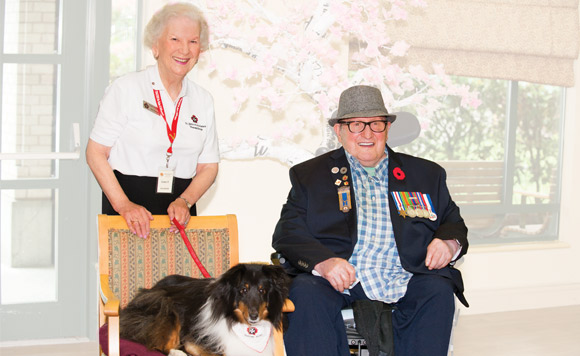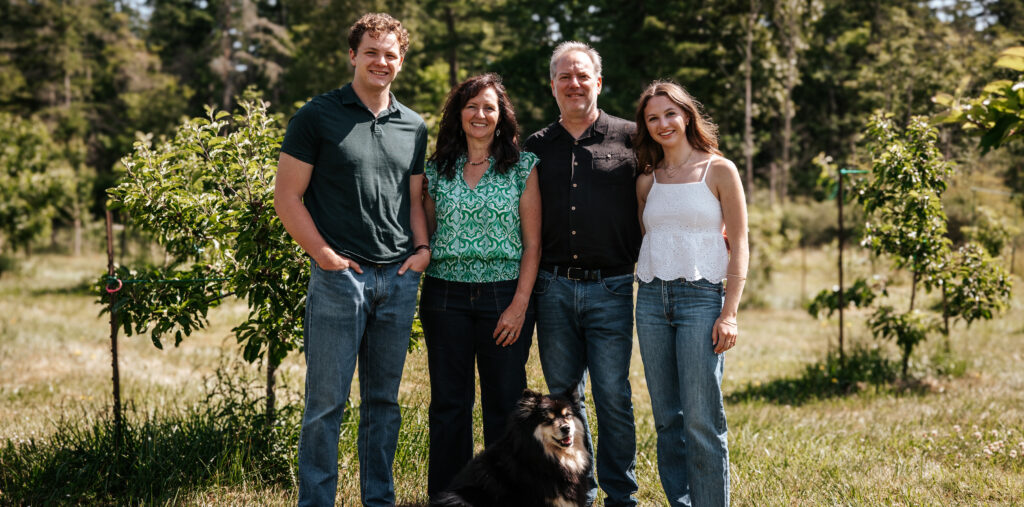Seaside loves all of its furry friends, and we are hosting our Third Annual Pet Contest in this issue. Animals can give comfort that sometimes no words can offer. They provide more than just a warm furry body; many instinctively understand when someone needs comfort and they offer it unconditionally. There are many organizations that are in need of volunteer assistance, what brought you to St. John Ambulance?
Truth of the matter is that I saw an ad in the paper and I thought: “what a lovely way to combine my love of meeting people with my love of spending time with my dog.”
You hear a lot these days about dogs who alleviate Post Traumatic Stress Disorder, horses who cure kids with ADHD, and dolphins who can relieve depression. After 14 years of volunteering at The Broadmead Lodge with your “sheltie” therapy dogs, share with us some of the highlights of how this program has made a difference for the veterans.
I can just see the change in the veterans; they light up and you can see how much they want to visit. Many veterans had dogs of their own and they miss spending time with them.
In order to be a therapy animal, dogs must be very socially interactive with people, such as those in hospitals, nursing homes, rehabilitation units and schools. What qualities/personalities make the best therapy animals? Do you think these are innate qualities or can they be taught?
Temperament is the number one quality, followed by a friendly and quiet nature. I think that some dogs are born with the right temperament, but it can also be taught. There was a great book written once called There Are No Bad Dogs and I believe that it is the owner/handler’s responsibility to help their dog feel comfortable meeting people and other dogs.
How does life with a therapy dog differ from that of the usual owner/pet relationship?
In a usual owner/pet relationship it doesn’t matter as much how a dog interacts with others. A dog could be shy, timid or more reserved and the only thing that matters is if that dog’s personality fits with its owner. Therapy dogs really need to have an outgoing personality and be interested in engaging with people. They have to show that they are comfortable meeting all kinds of people, not just an owner.
What training does a dog undergo to prepare it for this work? How does one go about becoming a volunteer?
The owner/handler is responsible for training their own dog and a therapy dog must be completely responsive to their handler. I took Corrie to obedience classes at six months old and that taught her how to follow basic commands and also how to react with other dogs and people. I guess some people could do that themselves, but Corrie came to me from a farm and it took effort to get her comfortable with the noise and traffic of Royal Oak where I live.
To volunteer, you contact St. John Ambulance or Pacific Animal Therapy Society and the dogs must be certified which includes both the owner/handler and dog. There is a testing process of six to seven scenarios involving swarming and other things to help gauge the dog’s comfort in difficult situations. To bring your dog to a facility like Broadmead, volunteers go through an interview process, reference and criminal record check, and orientation/training after their pet therapy animals have been certified. At The Veterans Memorial Lodge at Broadmead, I do the walk-through orientation with all new pet therapy volunteers.
What is the best part of your job?
I think it’s the entire job! When I leave the lodge, I have such a good feeling about how happy people were because of Corrie’s and my visit. Every visit, I have at least one person reach out to say how happy they are that we came.
Photo by www.nuttycake.com.




